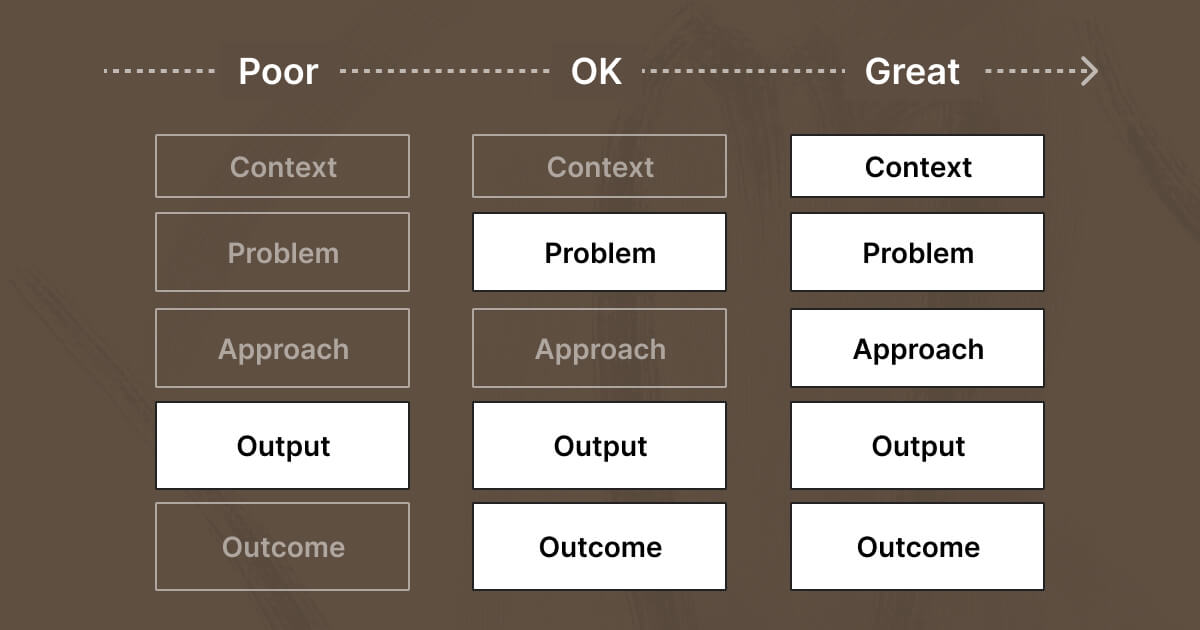Jan 06, 2021 | by Budi Tanrim
An effective product design portfolio – Structure
I review hundreds of candidates every week.
Here’s the hard truth: It takes me less than 2 minutes to decide whether I want to interview the candidate or not.
Most of the time, I will not be interested in a candidate who doesn’t have a portfolio in any format. If it’s just a resume, 90% I will continue to the next candidate. Because in that case, I don’t have anything to assess whether this candidate is good other than the company’s name. In fairness, sometimes I’ll be interested when the resume have a big company name. But, that’s not a guarantee as well.
Throughout that process, I only think about one question: Can I imagine this candidate work for the opening role we have? If I can see the right skill and experience to work in the opening team, I’ll put her into the interview pipeline.
So, what makes me interested? A portfolio.
A portfolio is a concise story about your project.
What do I mean by portfolio?
A portfolio is a concise story about your project. In the story, you bring the reader to the problem you were solving. You then help the reader understand how you arrived at the solution. What was the process looks like? Most importantly, you have to communicate the outcome. Because, as a product designer, we’re not measuring success by output.
When it comes to the portfolio structure, each designer has their own way of structuring them. Here’s mine:
- Context: Why this project started? What was the initial hypothesis?
- Problem: What was the problem?
- Approach: What was the approach you took in the project?
- Output: How was the output or artifacts look like?
- Outcome: What was the impact on the customer and the business?
The poor and great portfolio
Now, there is a difference between a poor portfolio and a great portfolio:

A poor portfolio for product designers is when it only shows the artifacts (e.g. the screen). I’d consider it as a weak portfolio. Because it doesn’t help me to know whether a designer can make a good decision or at least have a good line of thinking. I don’t even know if the outcome help the team achieve the goal or learn something.
An okay portfolio describes the problem and the result. I generally encourage people who don’t have enough time to go with this format. I will mostly be interested in this portfolio when I hire a junior-mid level.
A great portfolio provides context on why this project started. What are the customer problems and business challenges? Then the result of their solution. The approach is a bonus tho, I’m still okay when it doesn’t show a detailed process. Because at this point, I’ll be interested if I see they solve a complex problem before and can articulate it clearly.
You can see how I adopt this structure on one of my latest portfolio.
Build a portfolio the time your project started
I found it useful to write down my project’s narrative as I work on my project. This will be the foundation of my portfolio later. I encourage people to imagine they will make a portfolio right when the project has started. In my other post, I explained the benefit of creating a portfolio.
Please note that you shouldn’t make ambitious or selfish decision throughout that project just because you want your idea to be in the portfolio. I know people sometimes trapped this way. So double check your ego.
You might ask…
- What if I can’t measure the result due to the company’s constraint?
- What if I’m a student and don’t have any project?
- What if my team doesn’t have a researcher? Will that considered as bad?
I’ll talk more about this in the next post.
You can also ask more question, click the appropriate button below.
Hi, this blog is no longer active. I move to substack. You can subscribe below or go to newsletter.buditanrim.co



